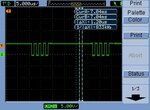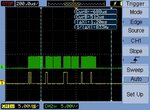benarjee
Newbie level 4
data_read3 = data_read1 || (data_read2<<8); // read the received data from the buffer
pls checkout the OR ing Symbol to assign the data_read1 and data_read2 vaues to the data_read3.
pls checkout the OR ing Symbol to assign the data_read1 and data_read2 vaues to the data_read3.

